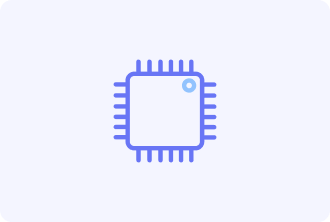EEPROM Definition

EEPROM that stands for an acronym Electrically Erasable Programmable Read-Only Memory is a kind of rewritable storage chip or memory device which is capable of maintaining the stored information even when there is a lack of power. Unlike flash memory which is also considered to be an evolution of EEPROM this type of storage is not capable of holding large capacities of data.
The EEPROMs are typically installed in circuit boards for the purpose of containing small amounts of data like instructions. Being a non-volatile type of data storage the EEPROM allows for the retrieval of information after a computer or an electronic device has been turned off entering a zero-power state.
What is EEPROM used for?
The main attraction which users see and gain from the Electrically Erasable Programmable Read-Only Memory is that it is perfect for use even when the power of the device is not on. On a more detailed note here is what this type of memory is most used for in conext of its abilities:
- Configuration of parameters. The Electrically Erasable Programmable Read-Only Memory is widely used in order to store settings of a variety of configurations without necessitating reconfigurations after power is turned on which makes it crucial for a thorough performance.
- Secure storage. EEPROM can be a powerful tool in terms of storing important or sensitive information that would include certificates, IDs, keys for encryption and so on. This is preventing access of third parties and warrants and is widely used by every healthcare mobile app development company.
- Management of event logging. Being a non-volatile type of a memory the EEPROM can record and store data which would include event information such as timestamps and system status and more for analyzing or diagnosing history.
Types of EEPROM
EEPROMs come in many different types, each designed to hit a different sweet spot for today’s electronics. Understanding the various types, from serial and parallel to microcontroller embedded, flash and UV-erasable EEPROM, would give engineers a bit of an edge when considering the options for speed, capacity, complexity and possible integration.
Every class carries its set of features and limitations, making the selection totally dependent on which tool best fits the given job.
- Serial
Serial EEPROMs employing communication protocols like I²C, SPI, or Microwire offer obsolescence in terms of transmitting or receiving data bit by bit and thus are more suited for streamlined data transfers. They find wide application in embedded systems since the few pins on them help in keeping the hardware footprint lean and cut down on board clutter.
While slower than parallel EEPROMs, they are perfect for the storage of small quantities of configuration or calibration data without making an overly complicated solution out of it.
If a financial engineering firm offers integrated payment terminals or builds hardware-integrated solutions (e.g., NFC wallets or QR-code scanners), serial EEPROM offers a compact, low-footprint solution — a key consideration when you hire fintech developers to engineer seamless, secure transactions.
- Parallel
A parallel EEPROM transfers data by the byte or word on several data lines, moving data in chunks instead of bit-by-bit trickles, resulting in much faster read and write speeds as compared to their serial brethren. Set-up-wise, they are often more complex, due to the much higher pin count, which can run the I/O requirements and indeed demand-width up in microcontroller lines.
This type is often the solution of choice where speed is everything, and rapid access to large non-volatile data is important.
- Microcontroller-embedded
Typically, microcontrollers include built-in small blocks of EEPROM for storing critical data, such as system settings, calibration values, or user preferences. This integration also lessens the burden on the PCB by discounting the presence of external memory chips in the system.
They are, however, limited in their capacity: therefore, they would be ideal in embedded systems where lightweight non-volatile storage needs exist and extra hardware would be more of a bother. The fintech software development company building custom microcontroller-based devices like portable payment scanners, IoT banking kiosks, or smart wallets benefits from internal EEPROM as it simplifies design and reduces the bill of materials
- Flash
Flash EEPROM is designed for storing large amounts of block or page data, chunking data in manageable bites for efficiency in bulk storage. Due to high-density packing and fast access times, they are used in USB drives, SSDs, and memory cards. Unlike with EEPROM where the data can be programmed one byte at a time, the flash memory usually prefers to erase whole blocks before writing, with a bit of a compromise hiding under the hood.
- UV-erasable (UVEPROM)
UVEPROMs are programmed electrically but are to be erased by exposing them to ultraviolet light through a quartz window on a chip, really clearing memory the old way, with light. The urethane light beam generated will wipe the memory out in hours. This is quite slow compared to current standards went with using bulky and expensive equipment.
During the early days of programmable devices, they were popular; now, however, they are rarely used and are being phased out by those that can be erased electronically for convenience and ease of use.
Advantages and limitations of EEPROM

This, in turn, implies that EEPROM can endure rough usage over a lifetime. The main flip side of having an EEPROM is that the writing speed is generally slower than RAM or Flash, which can bottleneck performance in write-intensive applications. In addition to this adverse effect on the performance about writing, the capacity is limited, therefore not intended to haul heavy loads, making it ill-suited for data-intensive applications.
The cost per bit is more than other types of memory, leaving it confined as a forked niche in the embedded design world.